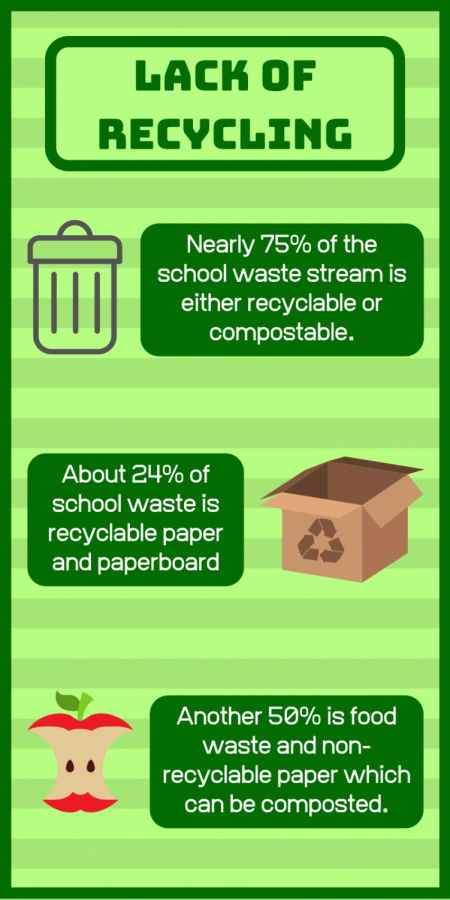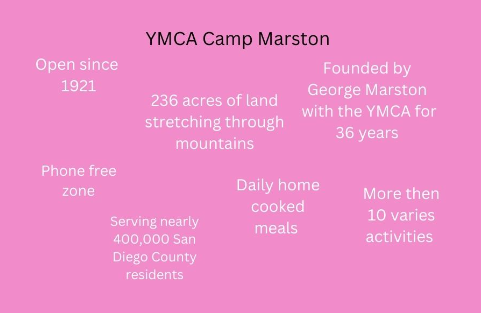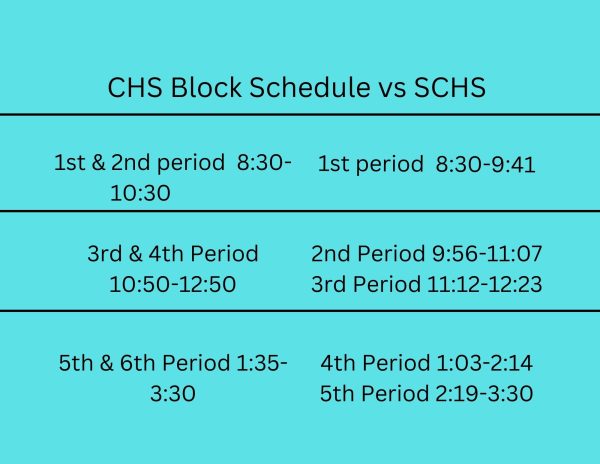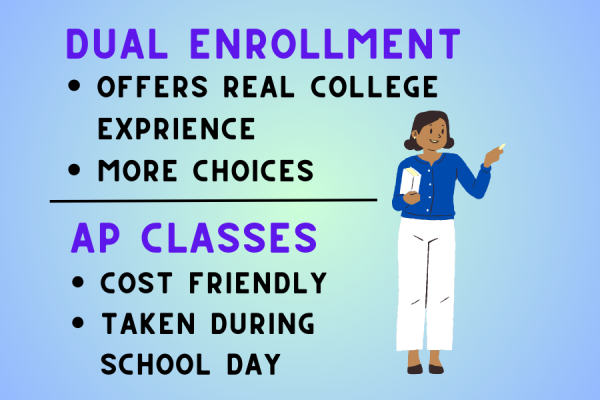The Lack of Recycling on Our Campus
Reduce, Reuse, Recycle. Every single day you produce about 4.6 pounds of trash and only one quarter of this trash is recycled– meaning the materials that belong in the recycling end up in trash cans. These materials include food scraps, paper, disposable plates and cups, cardboard and plastic water bottles. Elements like food scraps and paper can even be composted instead of being thrown in the trash. Today, in schools we only really see recycling bins in classrooms which aren’t even used for recycling. Most of the time students just throw their trash in there regardless of the fact that a recycling bin is meant for recycling, not trash. Enforcing a new recycling plan at CHS would prove to be beneficial to help reduce our waste as well as help the environment.
Some state and nearby governments expect schools to reuse. When large groups of people recycle as a community they help to lessen fossil fuel usage and even help to raise nearby employment. Making it a requirement for schools to recycle would definitely make an impact and help with the environmental side of things. In addition, recycling saves energy by letting resources break down naturally instead of rotting away in a landfill. When these natural resources are put in the right places they end up coming full circle and benefitting our earth, which is what we want in the long run.
The earth cannot withstand the current rate of destruction going on. When we fail to reuse the resources we already have, we end up running out of resources. Luckily recycling is easy and there are many articles online on the basics of recycling. When we don’t recycle we end up destroying natural habitats and then we as humans just start this chain reaction of one horrible thing after another happening to our planet.
On our campus, the CHS Green Club is working hard to take their ideas to principal Dr. Brockett and the school district. Green Club is trying to implement more recycling bins and to just be more conscious about recycling as a whole on our campus. Working with the administration and the school board is a great way to let ideas be heard. I think this generation learns better by doing rather than listening to a boring speech for hours so if we wanted to teach the students something, it would prove to be more beneficial to do something as a community rather than sit in the gym and listen to someone talk.
However, one challenge that I think is going to be a tremendous one to overcome is getting the student body on board. Teenagers don’t really care about making sure they throw their trash in the correct bin which I think is one of the key parts in helping to reduce this lack of recycling. To start, students were never really motivated to recycle because personally I never see blue recycling bins out in the quad during lunch. By having the right trash cans and recycling cans around campus could encourage students to put their waste in the correct bins.
The only way we can try to increase recycling at CHS is by showing the students how to. For example, there are two water bottle filler stations, one in the counseling office and the other under the 6000 building, where students can fill up their reusable water bottles instead of buying plastic water bottles and just throwing them in the trash right after. It takes about 450 years for a plastic water bottle to decompose which is quite a long time for a little 16 oz piece of plastic to be sitting in a landfill. If students started implementing a reusable water bottle into their routine we could save a lot of plastic from being dumped into wastelands.
Encouraging students to carry out the 3 R’s into their daily life may be a struggle at the start but as a community, if we all pitch in to help the environment we can really make a difference. In the past recycling has become a pretty global topic and of right now 94 percent of Americans support recycling and 74 percent say it should be a priority, but the national average recycling rate is only 34.7 percent which is quite a low number considering how many people support recycling.










Justine Alessi • Jan 13, 2020 at 6:48 pm
This is a well written and provocative article. I think it should be available to all schools so students everywhere can participate in this great motivator to save our planet! Good job, Sophia Weis !!